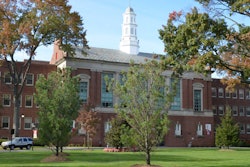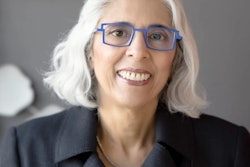WASHINGTON, D.C. – High levels of student educational attainment and career success in STEM disciplines become easier to reach when institutional leaders take a systematic approach toward change and make mentoring a prominent part of their programs.
This was among the key points made Wednesday at the National Science Foundation’s (NSF) 2012 Joint Annual Meeting, or JAM, on Broadening Participation Research.
“As [students] learn more and develop more and see what is out there, their world opens up,” Kimberly Cline, president of Mercy College, said in describing the impact of PACT, or Personalized Achievement Contract, an initiative her college implemented and that connects students with mentors who work as STEM professionals at major U.S. companies, namely, IBM and Johnson & Johnson.
While opinions vary on the practical value of mentors, Cline said mentors make a discernible difference in retention and graduation rates, and enhance students’ career prospects by exposing them to a career they might not have ever heard of before.
Cline shared her insights during a luncheon plenary session led by Diverse: Issues In Higher Education editor David Pluviose that also featured Gerald Monette, an independent consultant who works with tribal colleges, and Meldon Hollis, associate director at the White House Initiative on Historically Black Colleges and Universities.
Asked what it will take to broaden participation in STEM, both Monette and Hollis stressed the need for stronger federal investments in programs and institutions that have proven effective.
Monette touted the success of Tribal Colleges and Universities Program, also known as TCUP. Though TCUP is “one of the most underfunded programs at NSF,” Monette said (he put the figure at $13 million), he says the program has enabled tribal colleges, which rely completely on federal funding, to build capacity in STEM.
“TCUP has taken a systematic approach to addressing the STEM needs [of] tribal colleges,” Monette said. “Program officers have not only made funds available for basic fundamental capacity building, but also made efforts to provide resources to the faculty, because it’s known that faculty are busy trying to teach basic STEM to underprepared students, and don’t have time to devote to capacity building in the area of STEM.”
Hollis cited statistics that show HBCUs consistently produce disproportionately higher rates of graduates in the STEM fields. For instance, while HBCUs only enroll about 9 percent of all Black college students, they produce 30 percent of Black college students with STEM degrees.
“One of the smartest things you can do — at least in terms of broadening participation of African-Americans in science — is to invest in those institutions that are having success,” Hollis said.
The NSF JAM featured a variety of workshops designed to illuminate effective strategies in boosting the level of students from groups that are underrepresented in STEM fields.
Dr. Jerlando Jackson, director of Wisconsin’s Equity & Inclusion Laboratory at the University of Wisconsin’s School of Education, shared the success of a program called African American Researchers in Computing Sciences, or AARCS.
Similar to PACT at Mercy, AARCS found major benefits in the influence of mentors.
“Mentoring has come out as a very chief and important dynamic around what attracts and nurtures and maintains [students’] interest in computer science,” Jackson said of a four-year research project that examined what attracted African-American males to the computer sciences. “So it plays an important role in career identification and maintenance of that.”
Jackson – who made his remarks during a panel discussion titled “Underrepresented Minority Males in STEM” — also said that early exposure played a key role in getting more African-American males into the computing sciences.
“In almost every case, [the interest] developed as early as middle school,” Jackson said.
Jackson also said that computer science becomes more attractive as a field of study and potential career option when students meet other African-Americans in the field. He also cited the benefits of summer programs in which students can get “instant gratification” from computer science by using it to solve practical problems in their surroundings in a relatively short amount of time.
“In these particular programs that nurture their interest, they talk about how they could utilize computer science to solve problems that they see in their communities that would be helpful to their communities,” Jackson said.
Arnold Burger, physics professor at Fisk University, shared success of the eight-year-old Fisk-Vanderbilt Masters-to-PhD Bridge Program, a joint initiative he co-founded that serves as a “safe way” for students to go from the master’s degree to a Ph.D.
Burger said underrepresented minorities are 5 percent more likely to earn a Ph.D. by taking a master’s degree program as a “stepping stone” to reach a PhD.
“We have created a vehicle that allows students to earn that,” Burger said during a panel discussion titled “Understanding Institutional Interventions for Broadening Participation.”
Early intervention is a key aspect of the program – which helps support students from underrepresented groups to earn Ph.D.s in STEM fields, Burger said.
“Several weeks before mid-term,” Burger said of the ideal time for intervention. “If you wait too long, longer than that, it will be too late.”
Thus far, Burger said, the first three students to enter the program have graduated this year, and three more are set to graduate before the year is out, he said.
The program enjoys a 90 percent retention rate and a 100 percent graduation rate at the master’s degree level, Burger said, but the true sign of the program’s success is that it has been emulated by the University of Michigan, MIT and Columbia University.
Dr. Sara Wadia Fascetti, professor of civil and environmental engineering, Northeastern University, spoke of the ADVANCE program at her university, which seeks to develop ways to increase the representation and promotion of women in academic science.
Wadia-Fascetti said true institutional change is the type that will survive an individual leader.
“Look for resources that will outlive leadership, such as the practice of deans setting aside money for mentoring,” Fascetti said.
Carolyn Braswell, associate vice president of the Office for Equity and Diversity at the University of Alabama Birmingham, said institutional change is predicated on a variety of ingredients that include senior administrative support and clear communication.
It’s also critical to give administrators and faculty opportunities to influence results.
“If I don’t see some acceptance to what I want to say or what I’ve done, I don’t feel like I have a vested interest,” Braswell said.


















